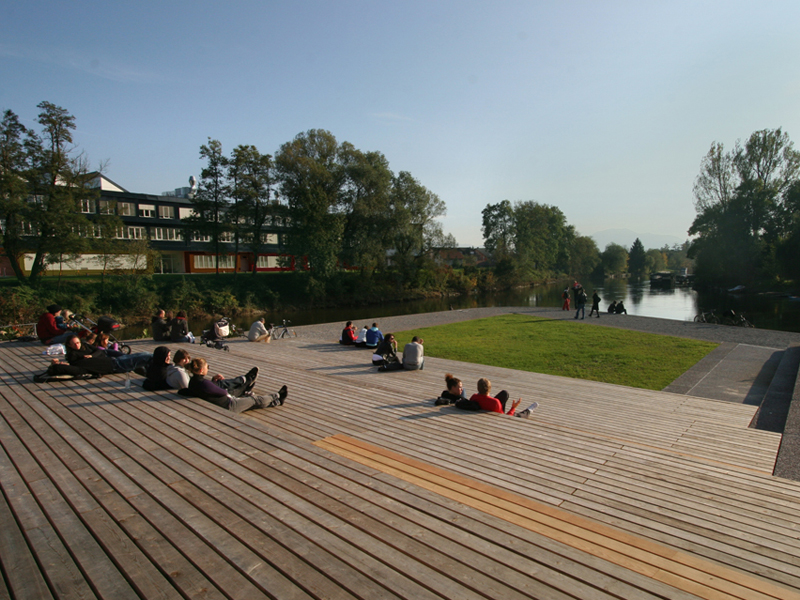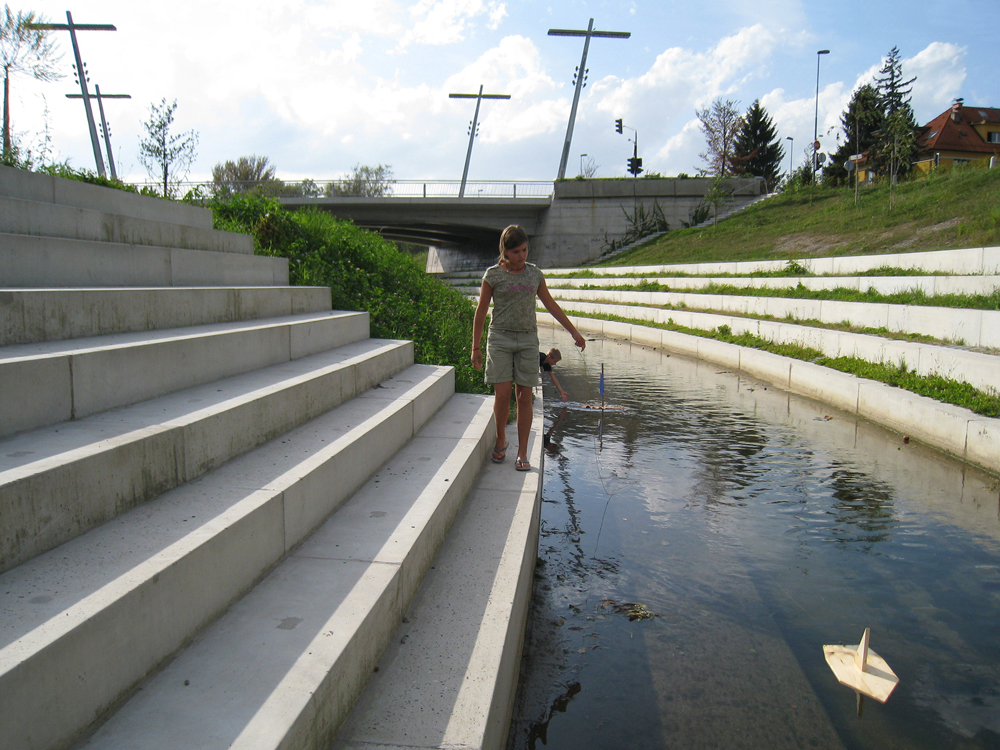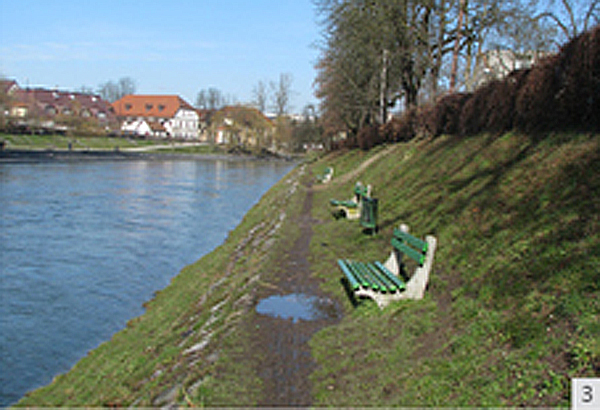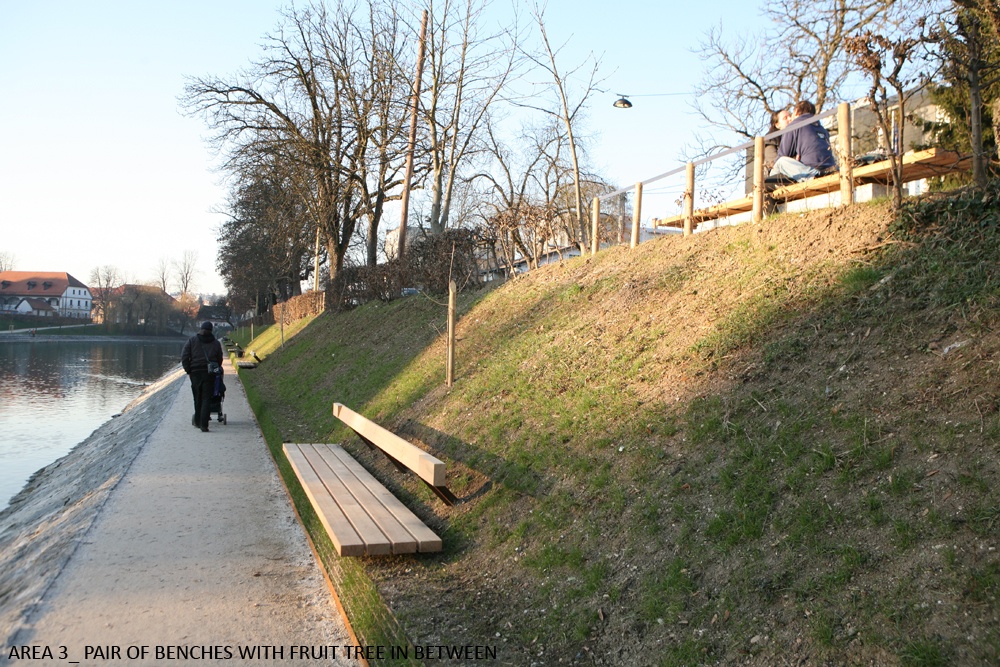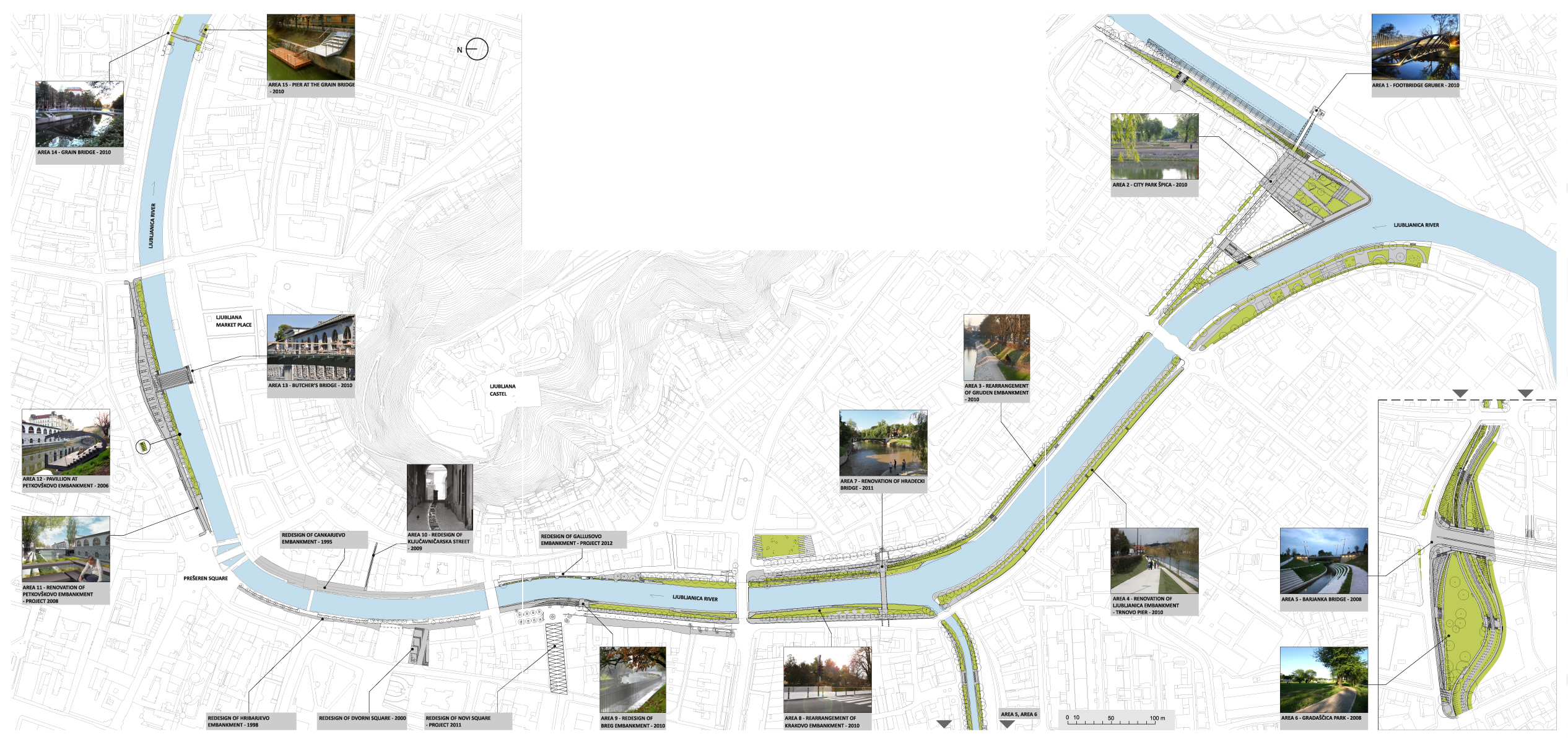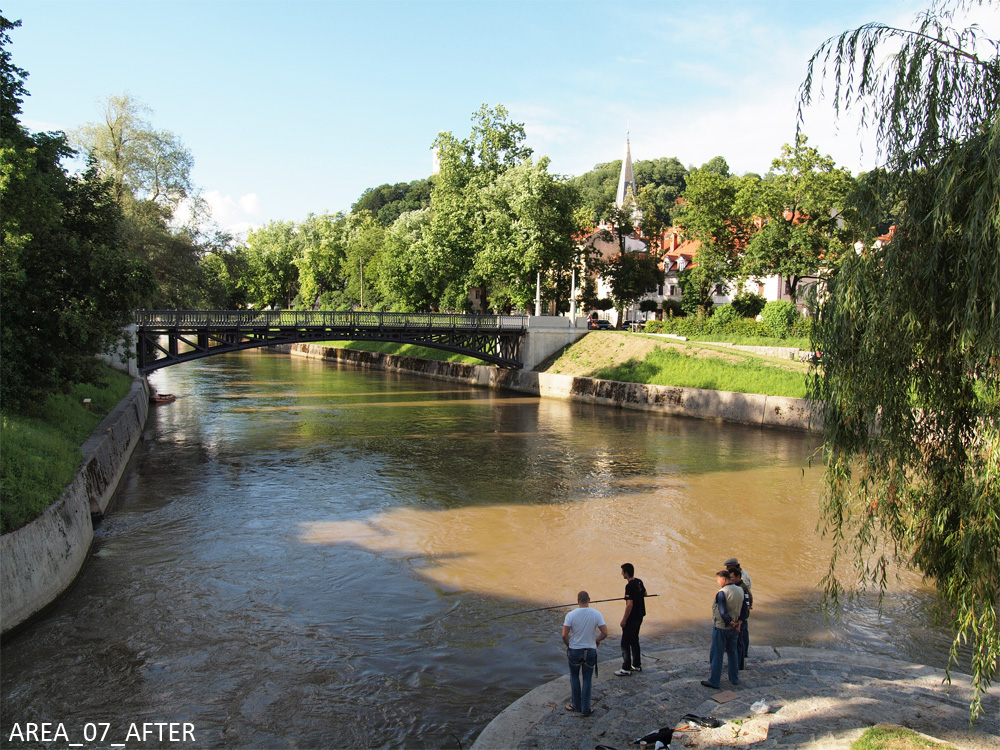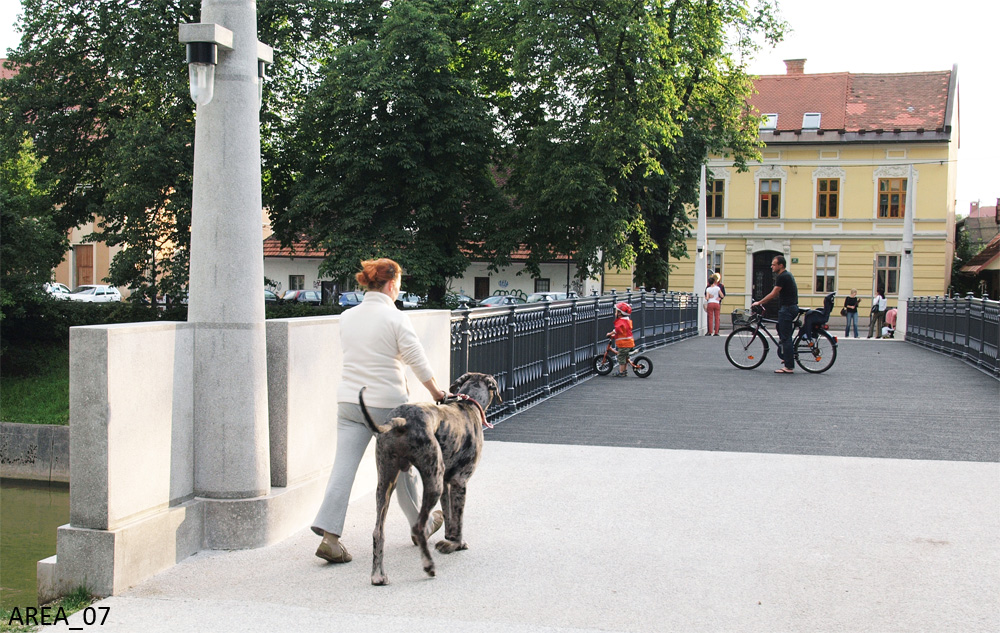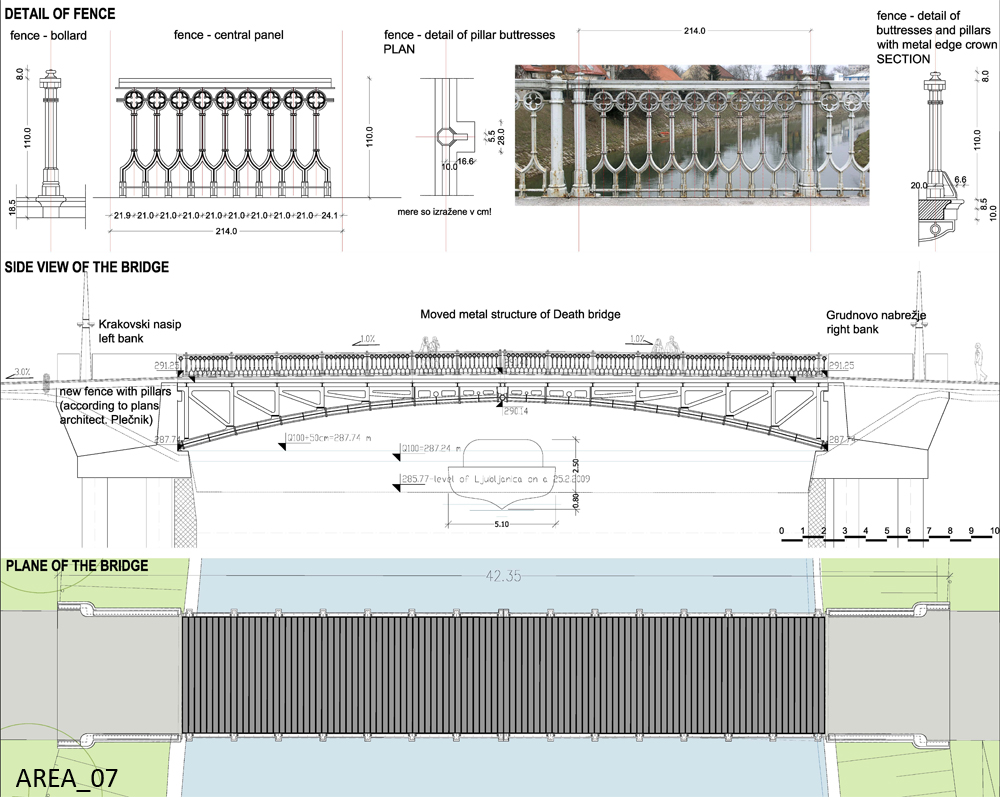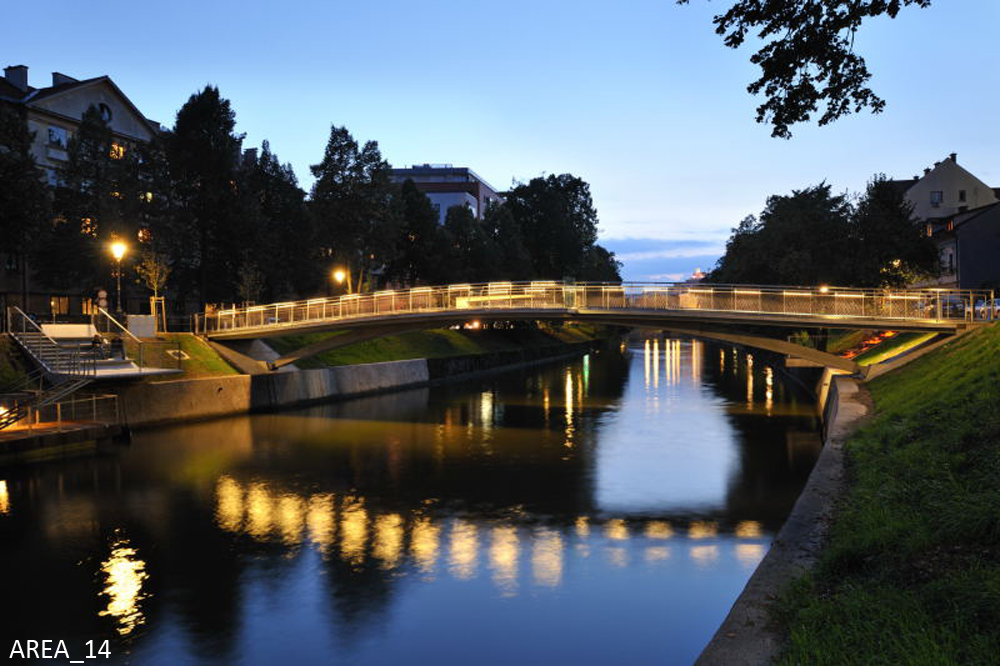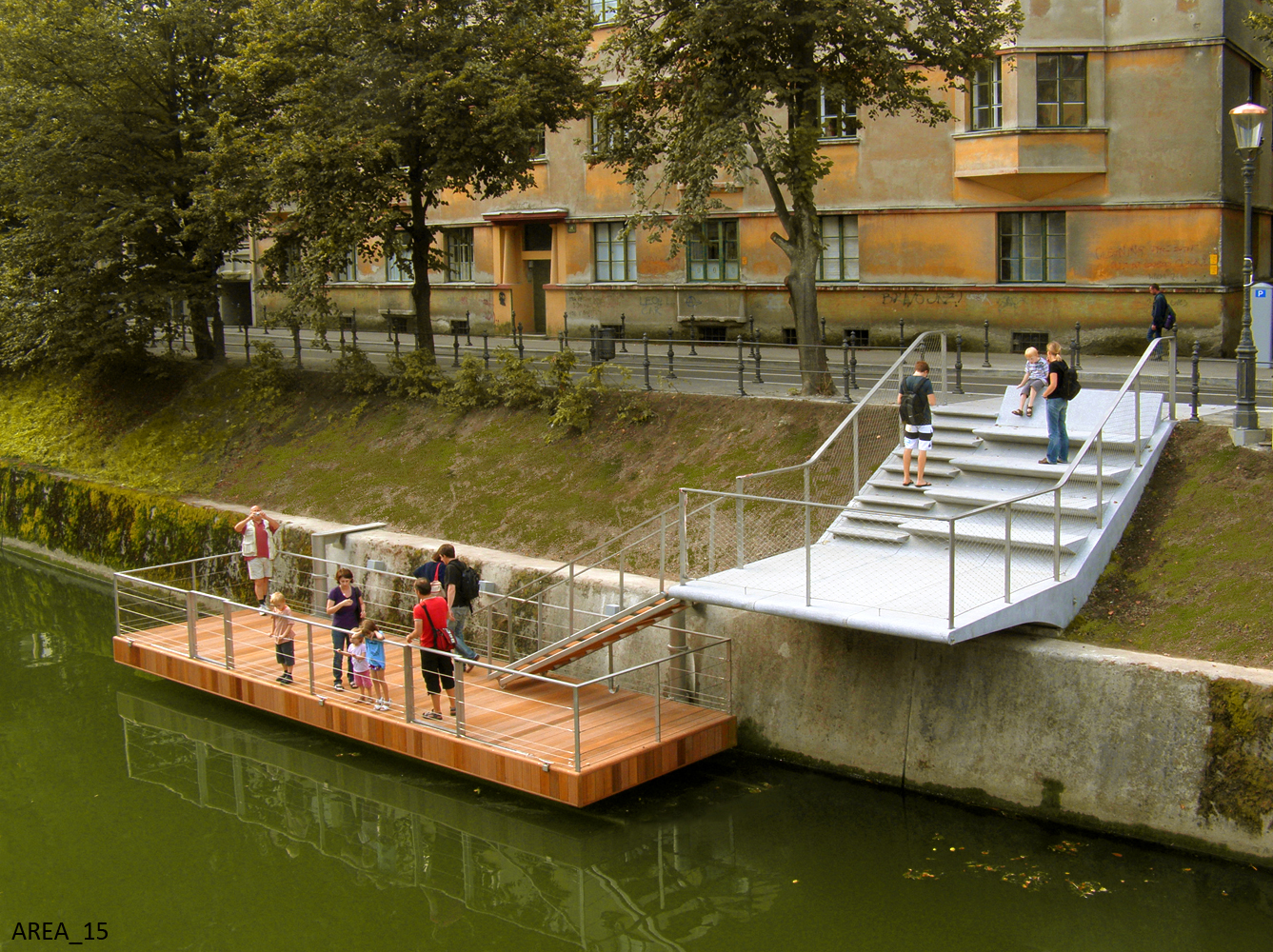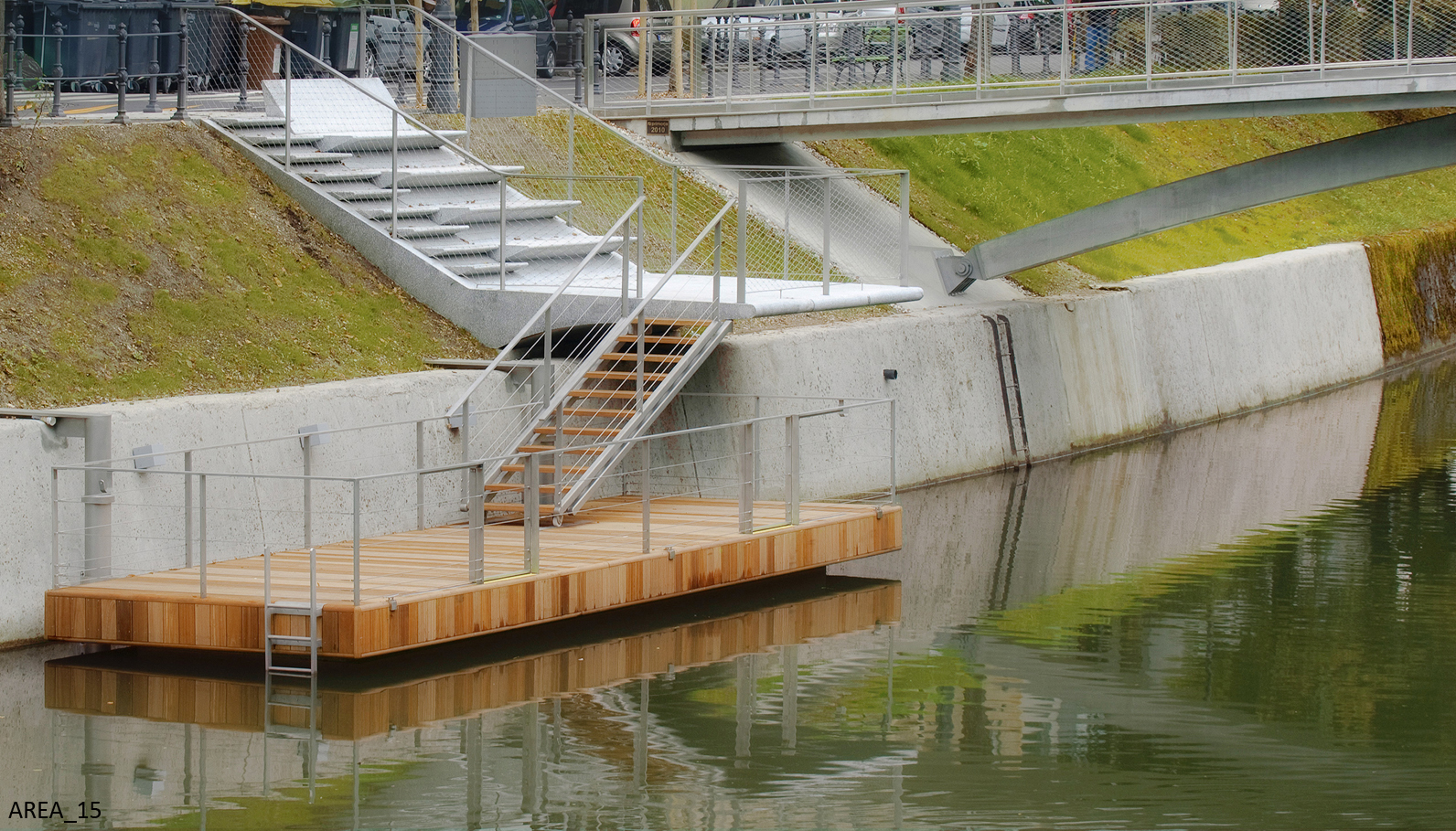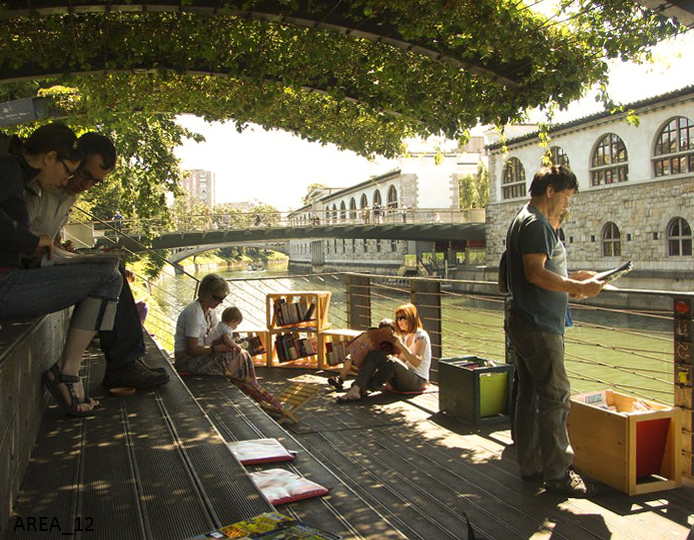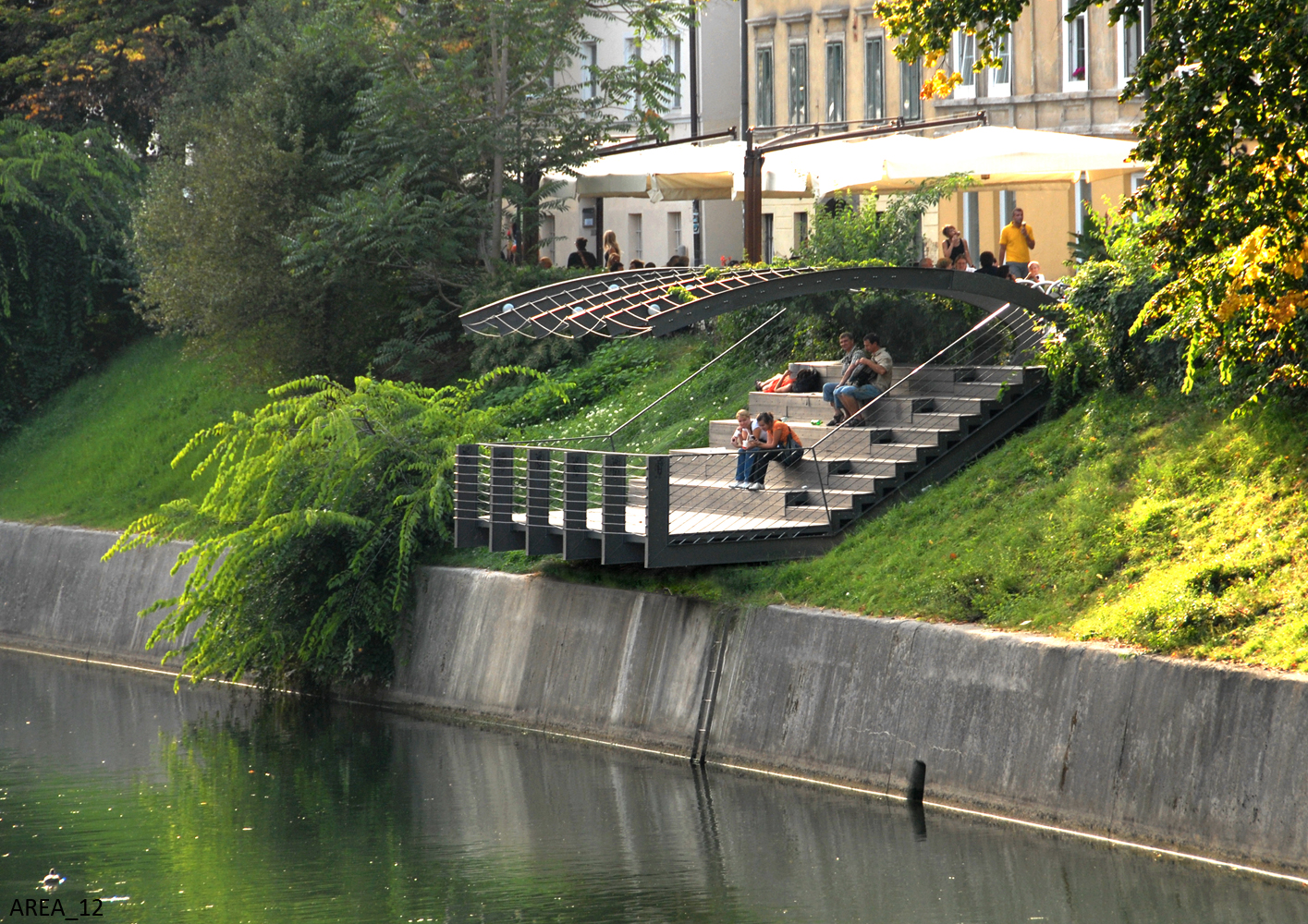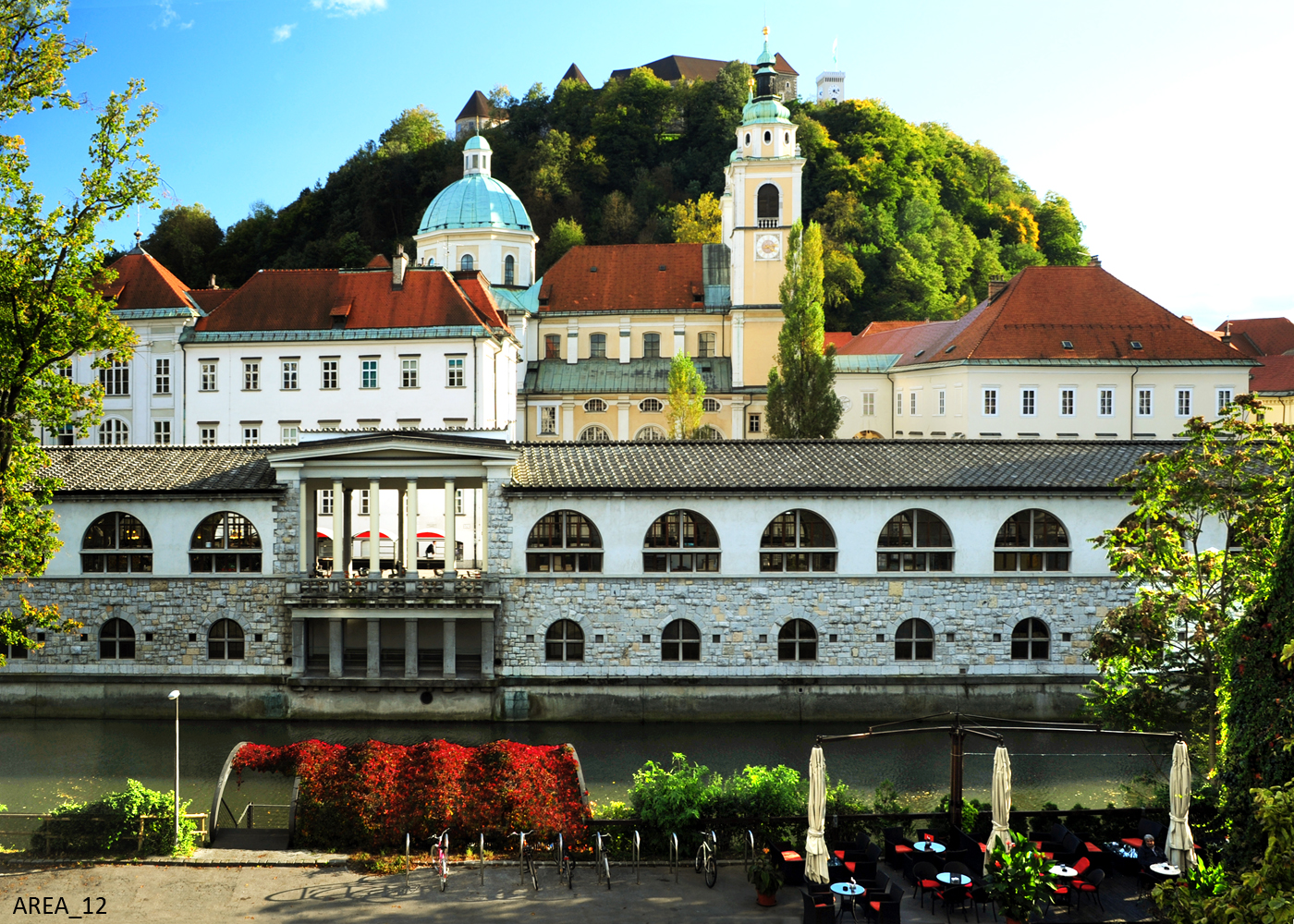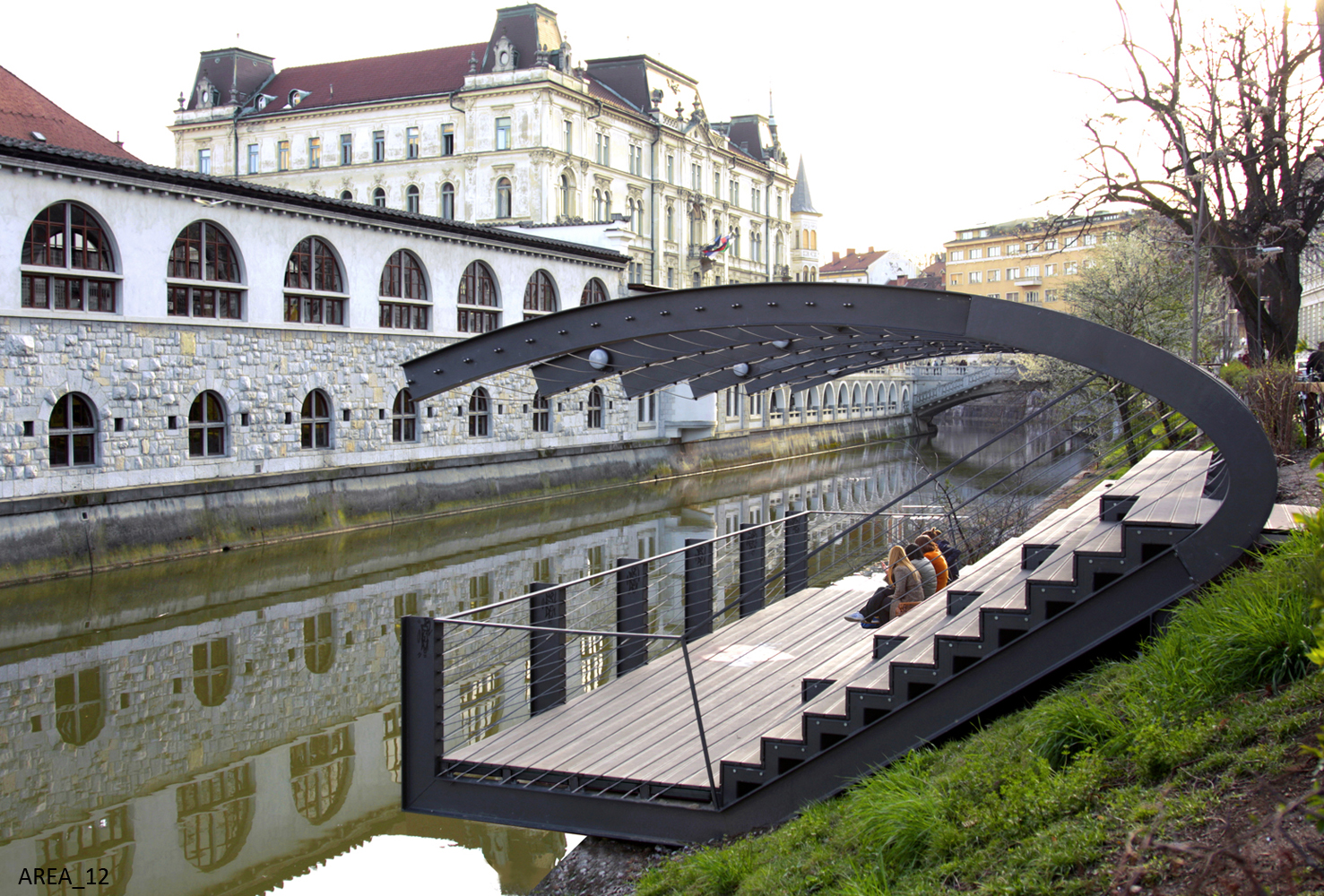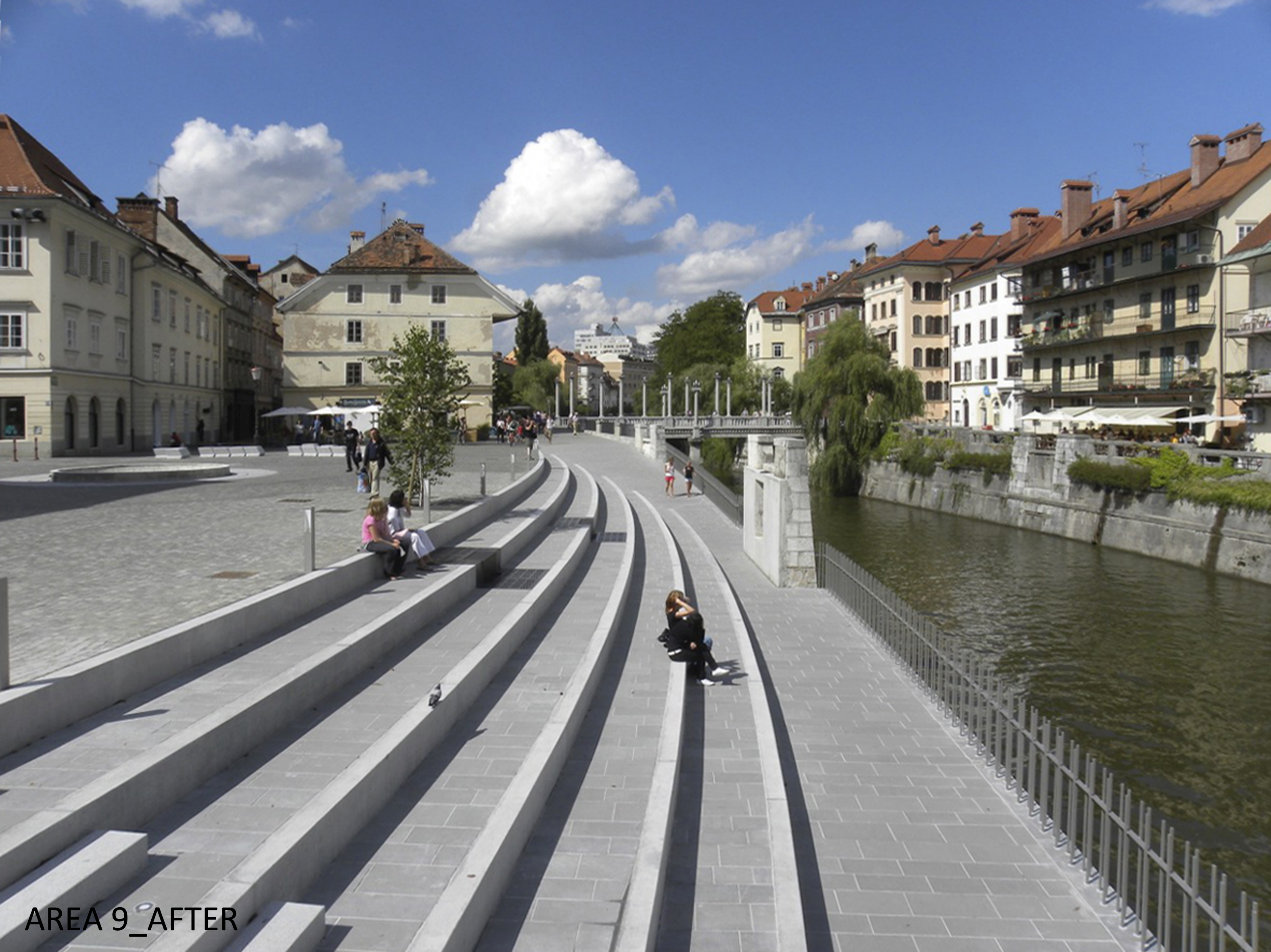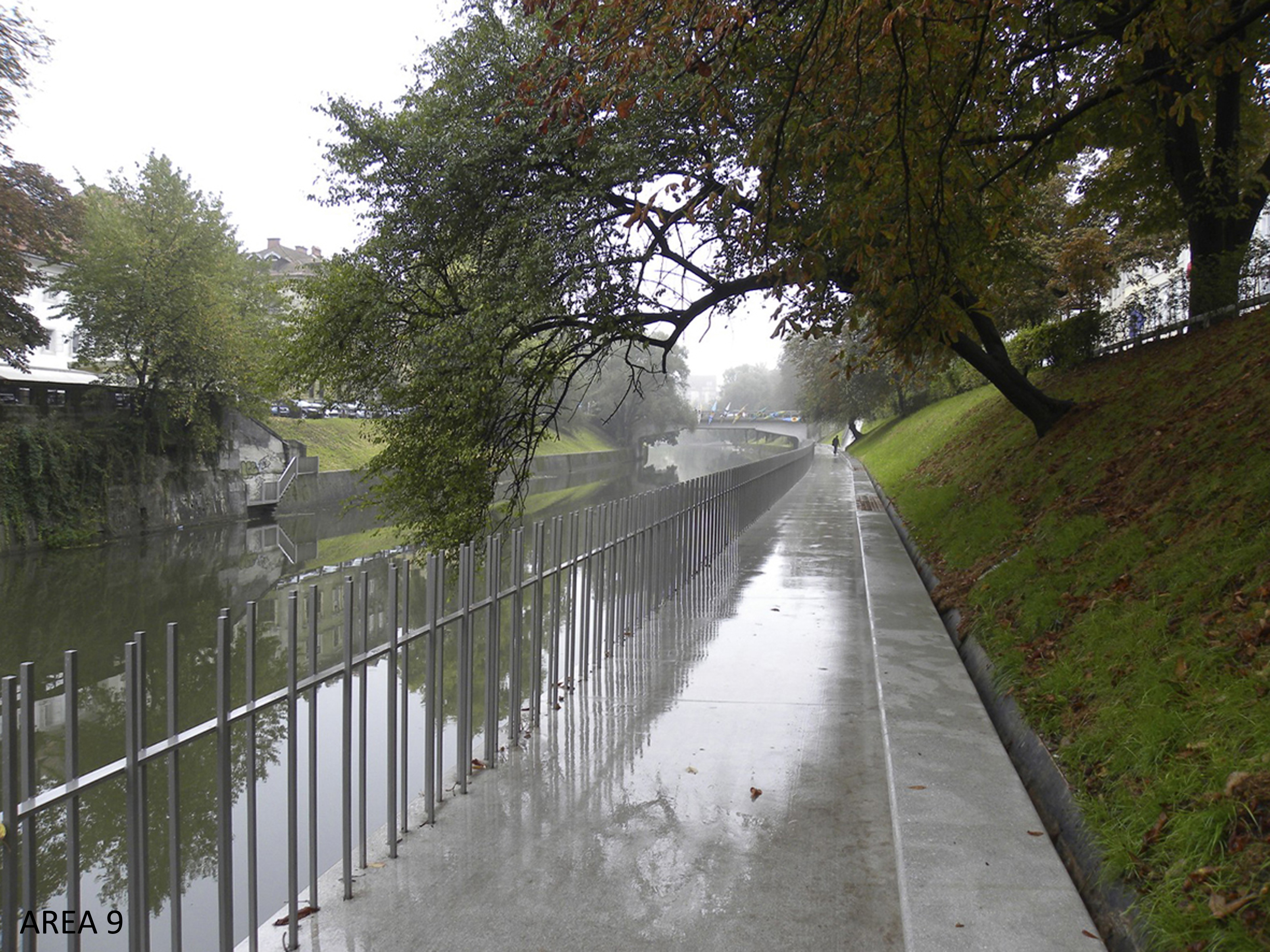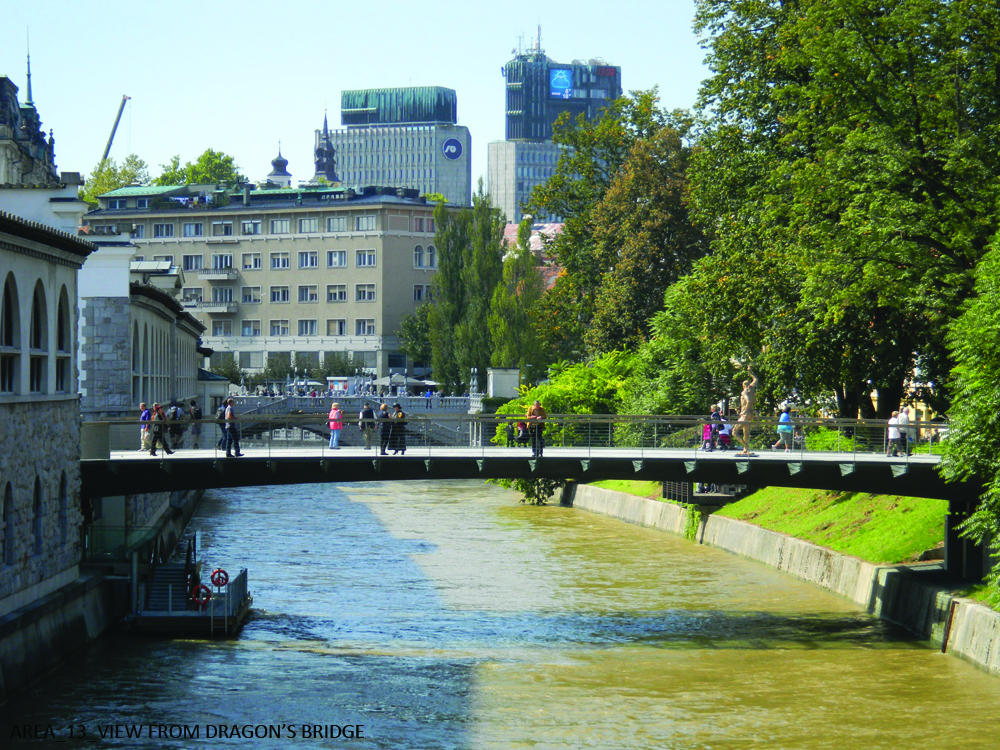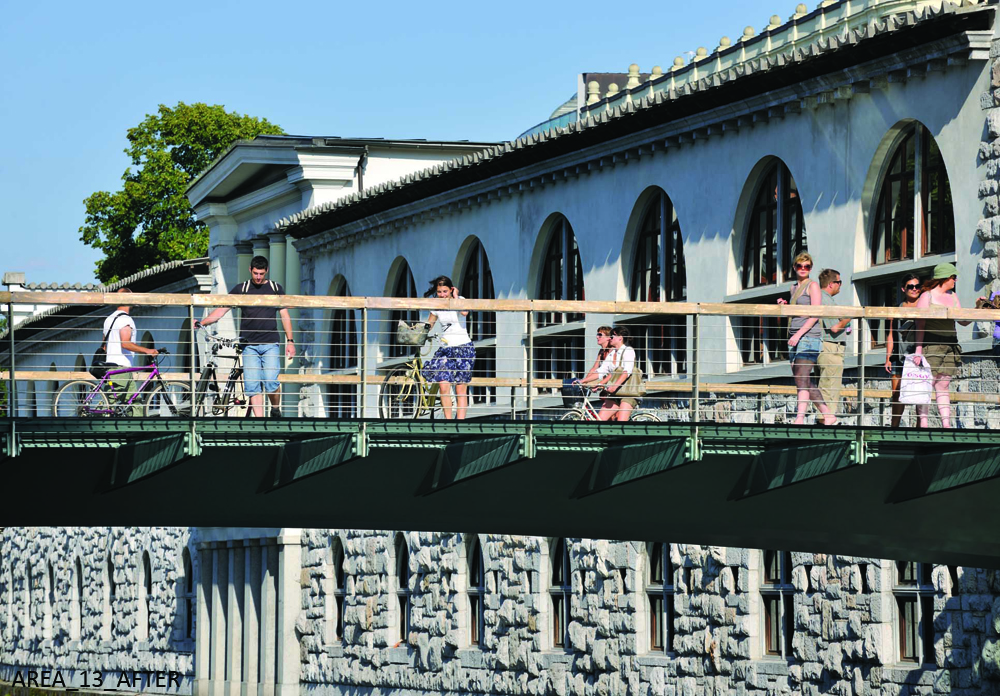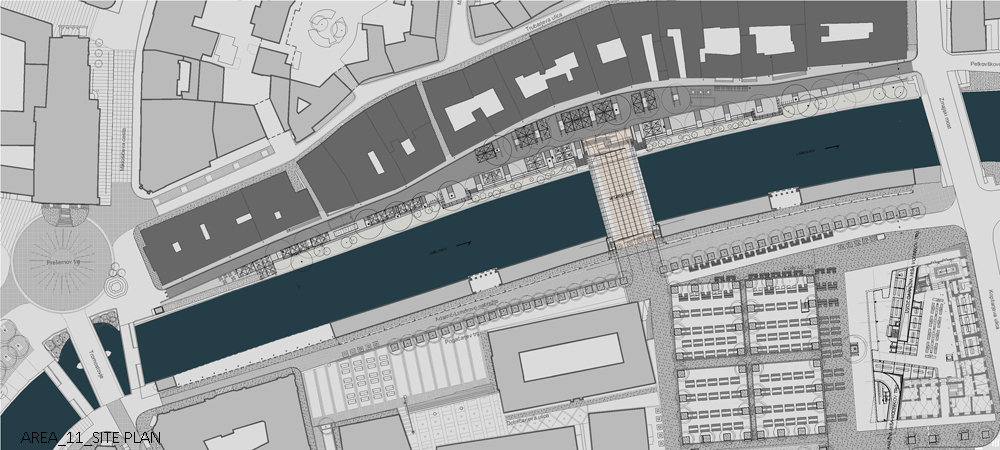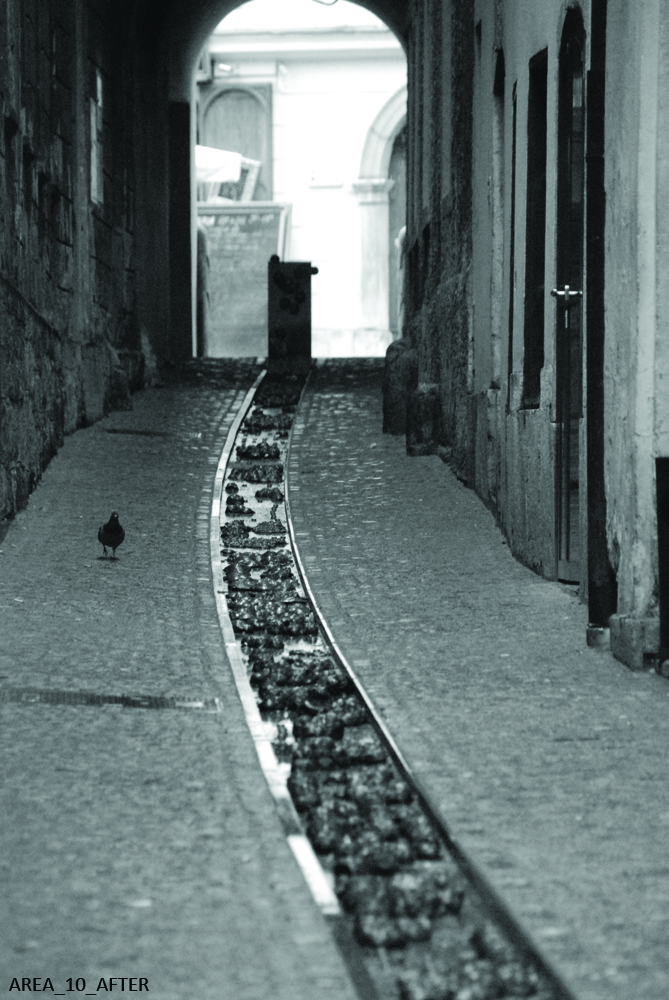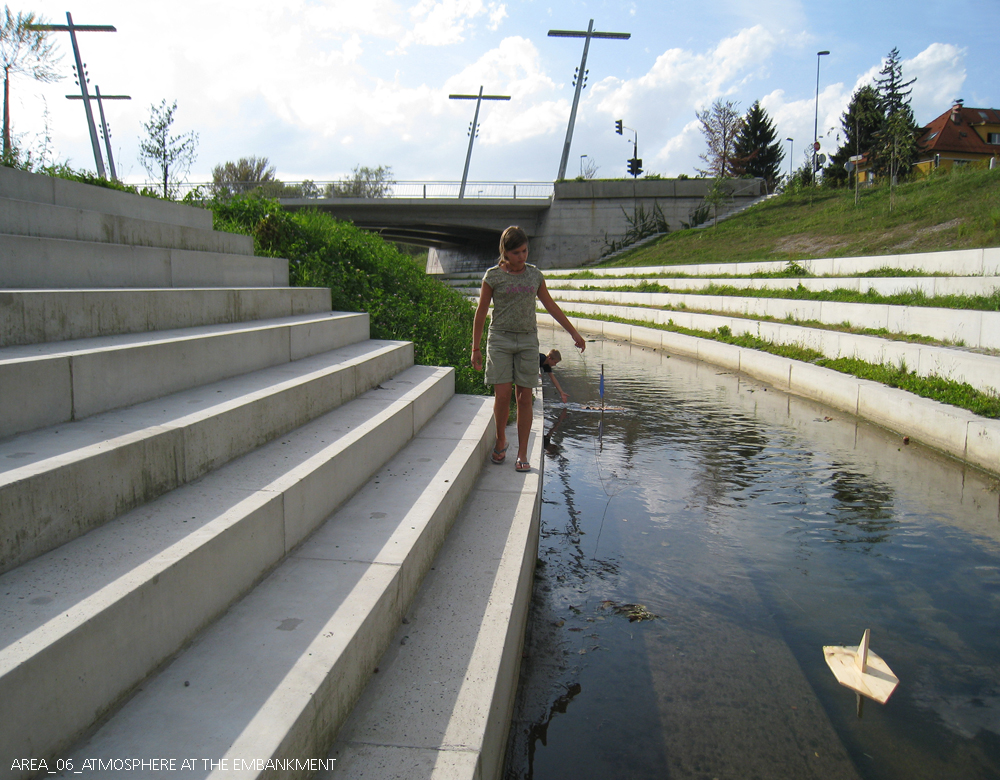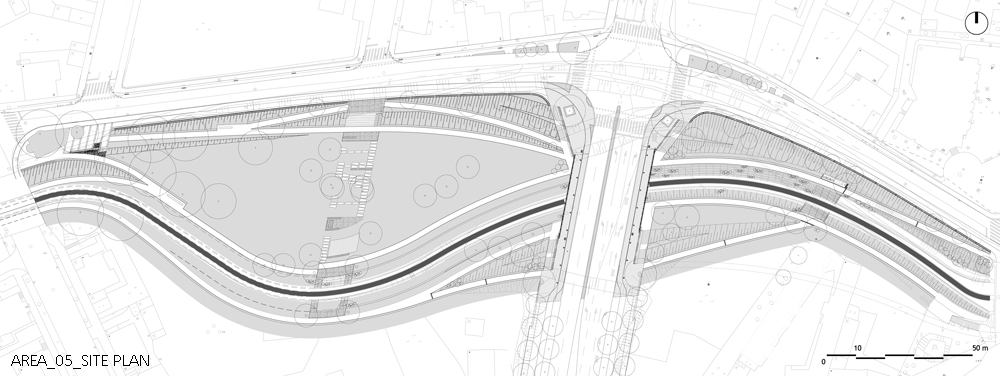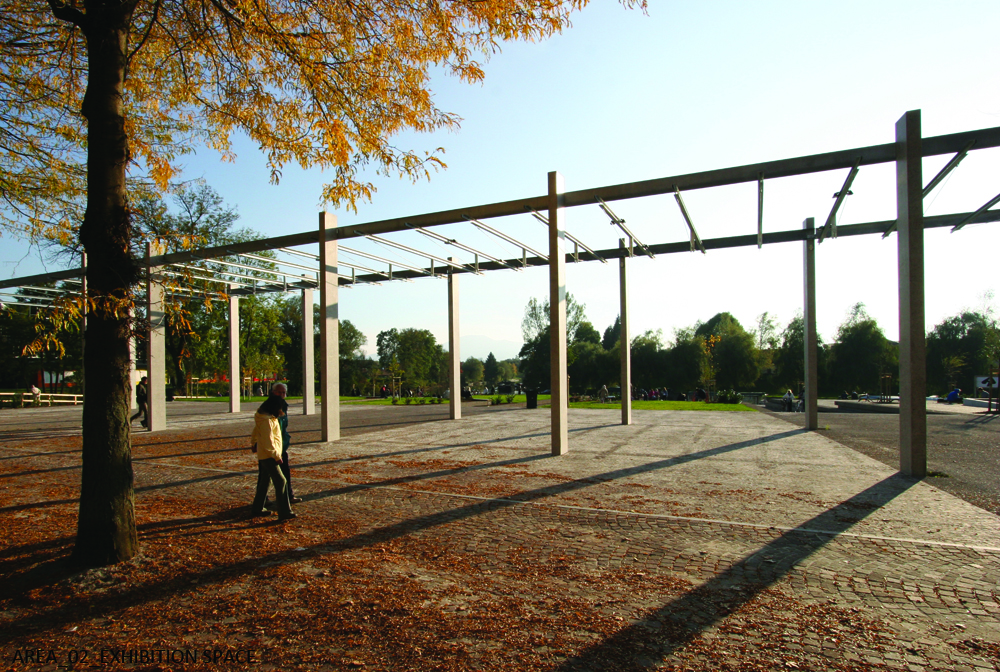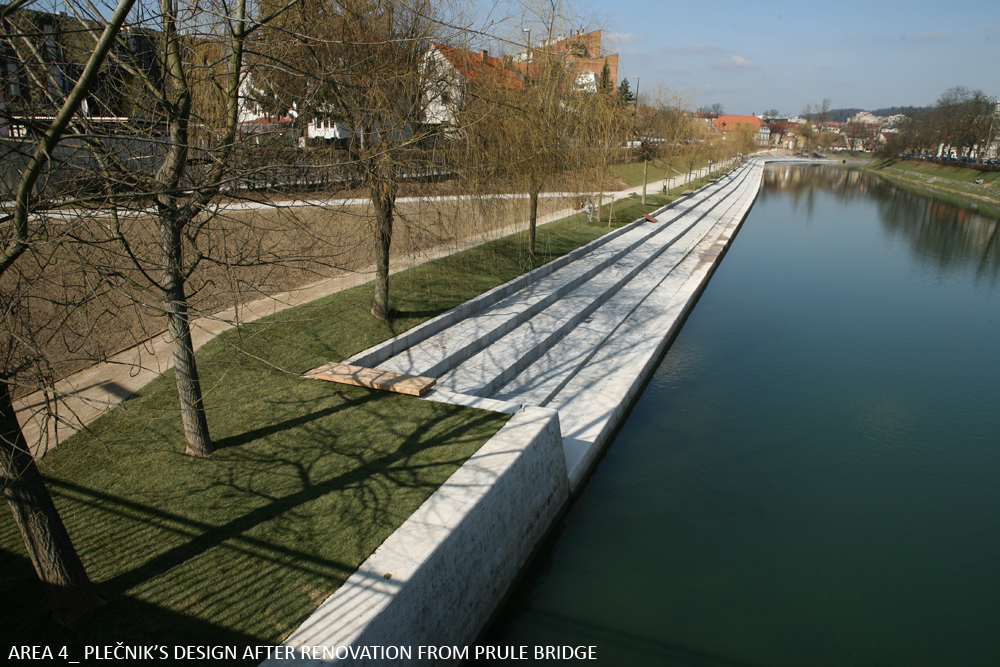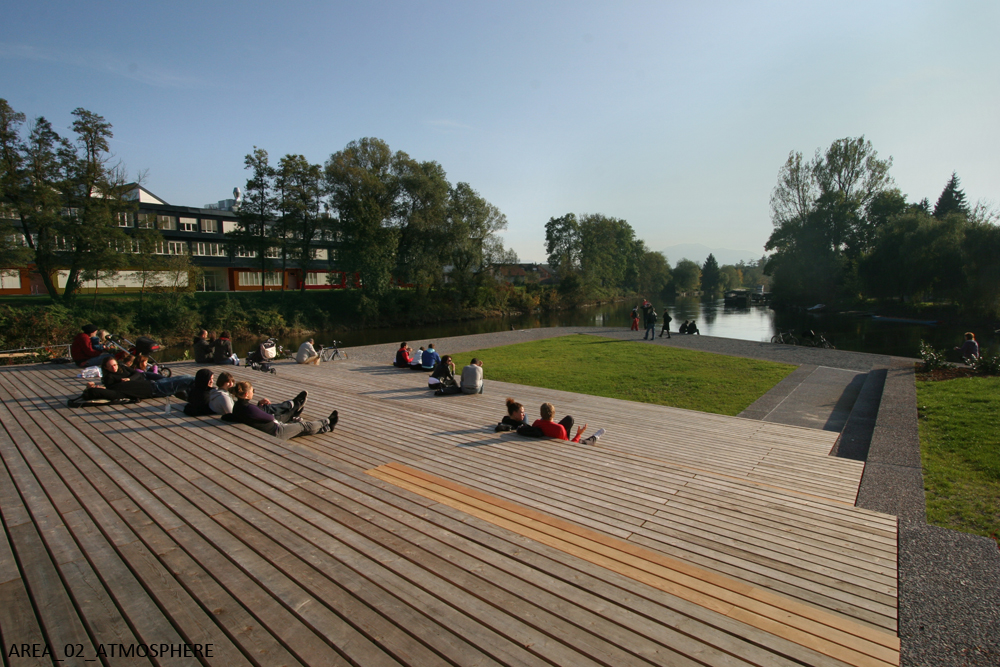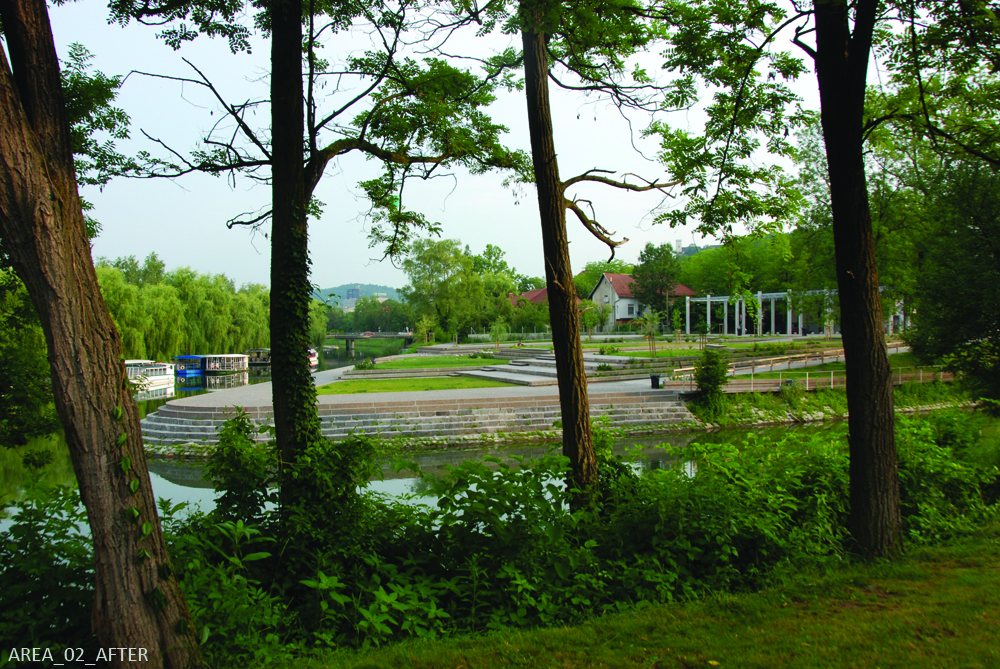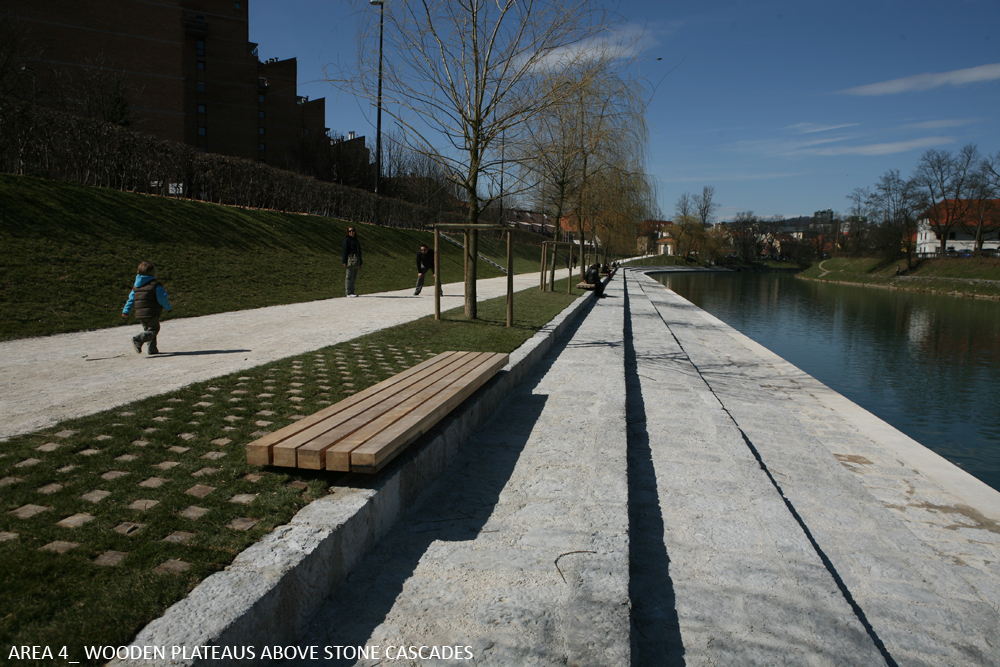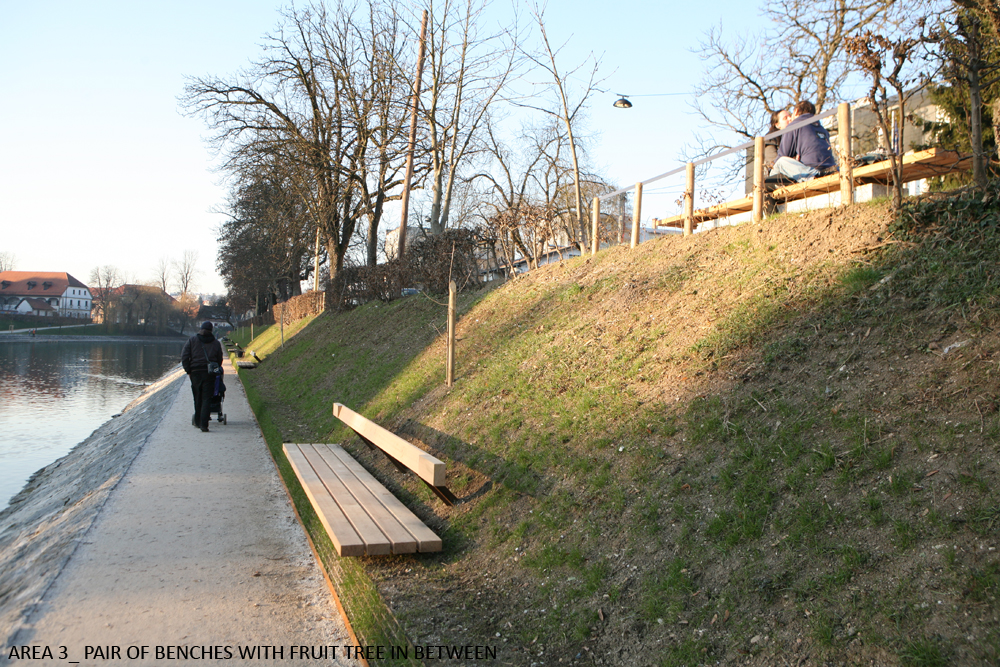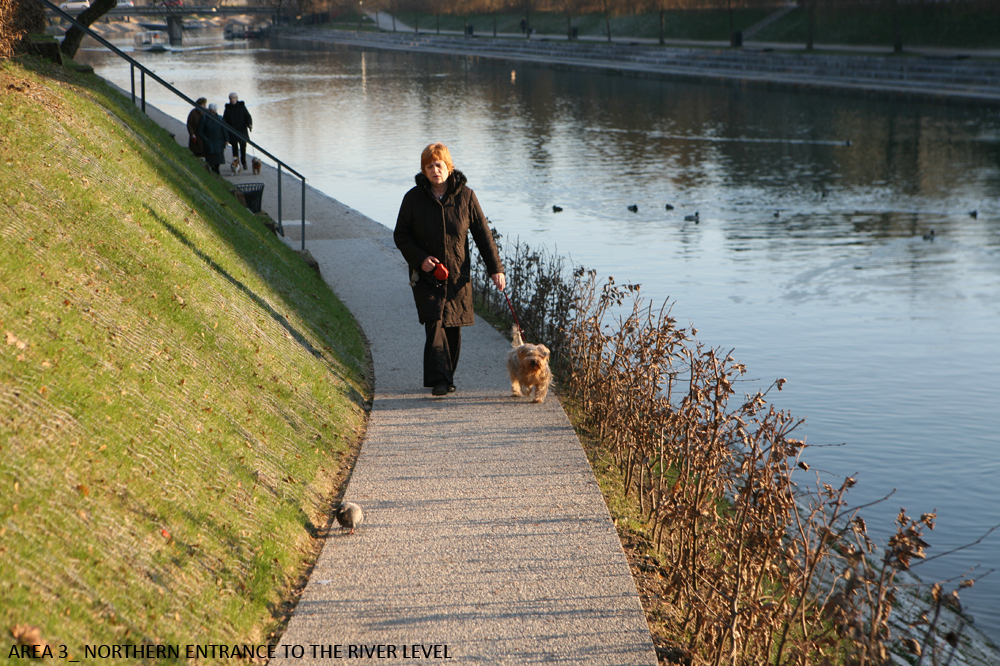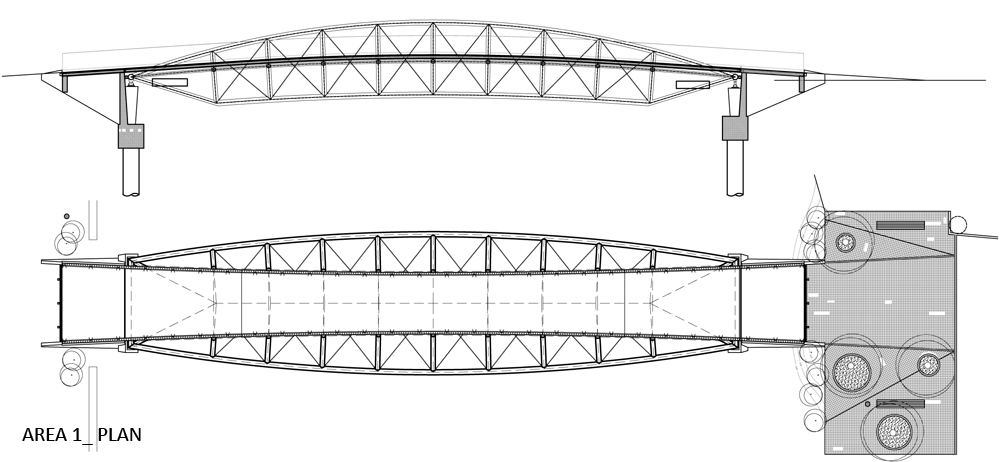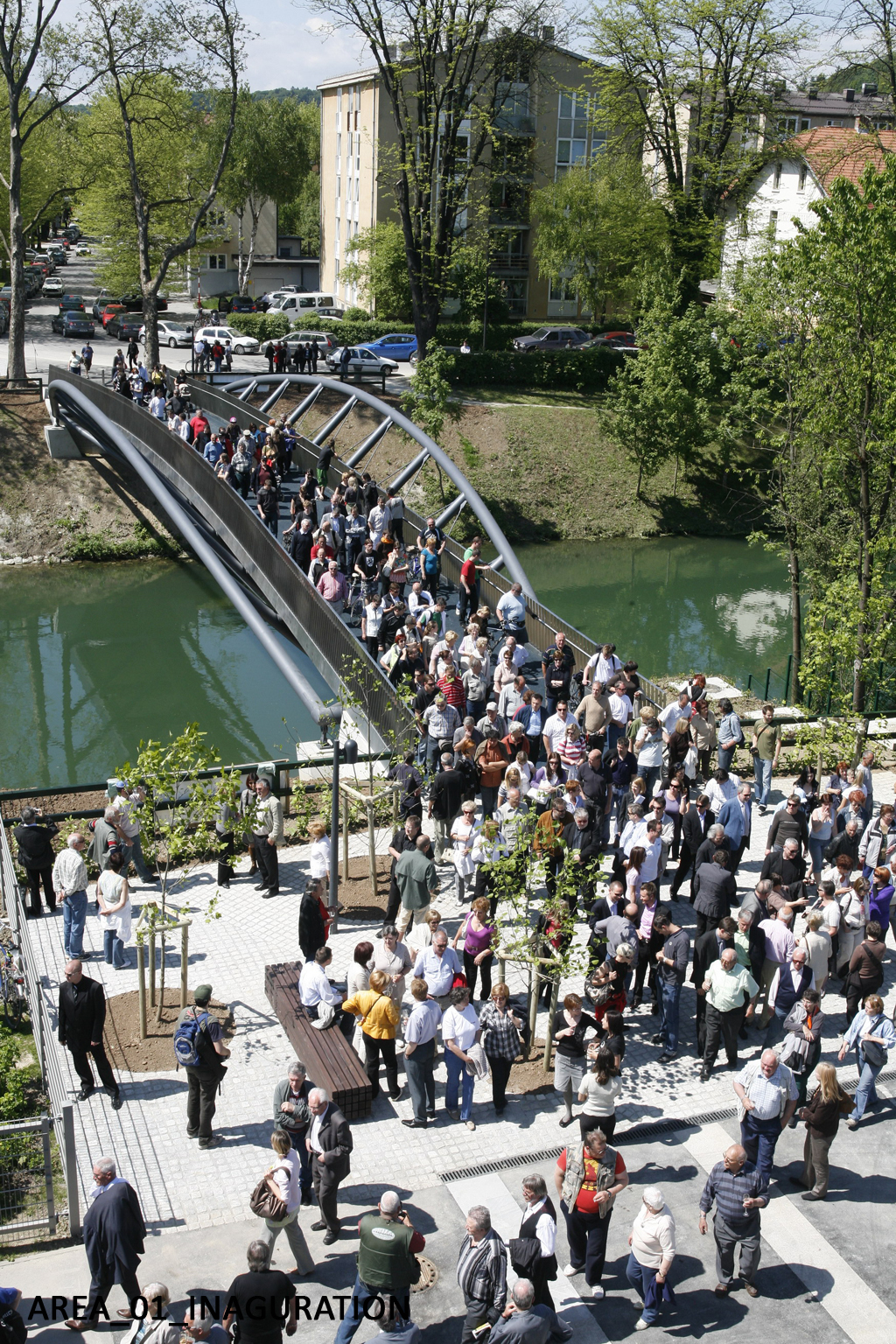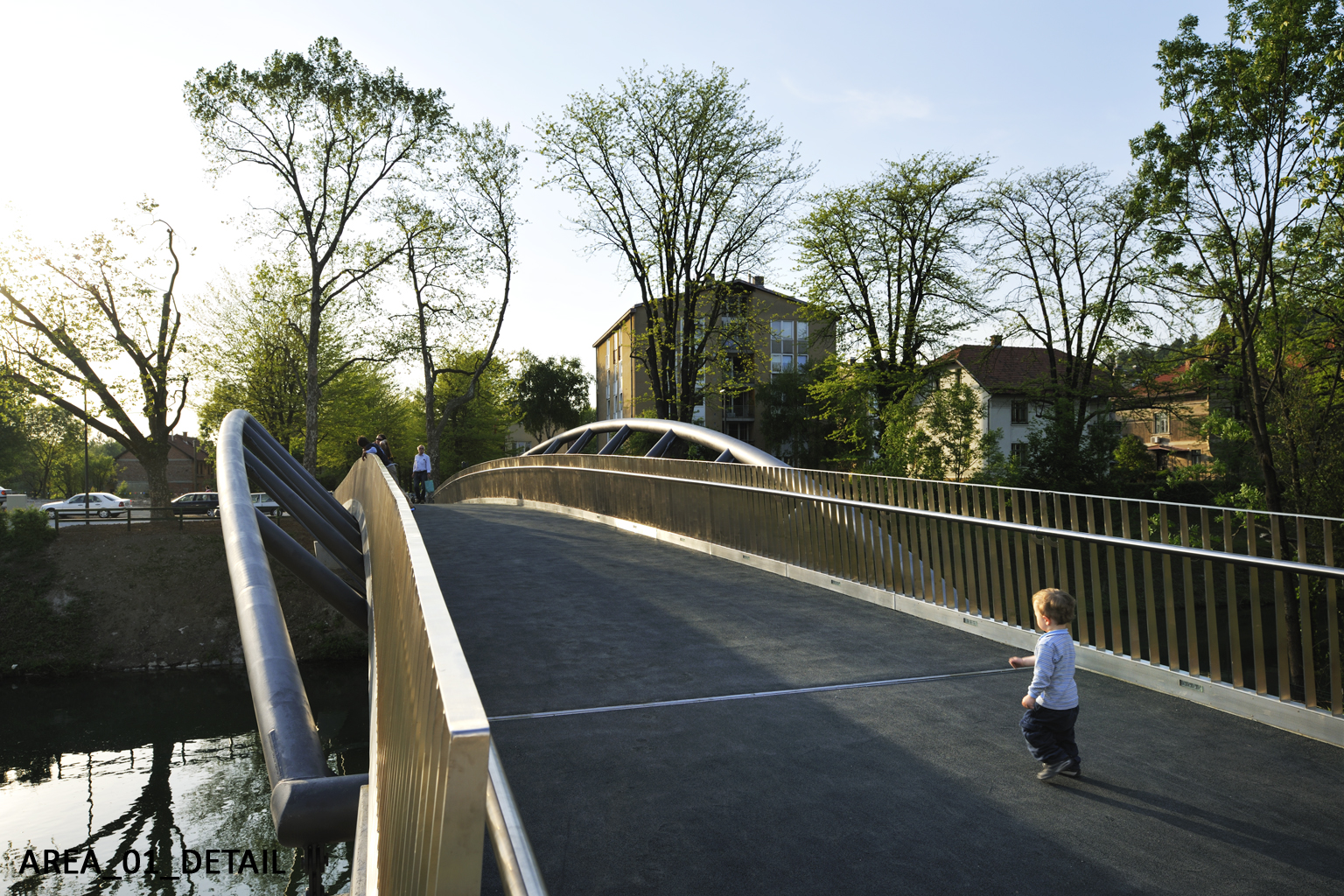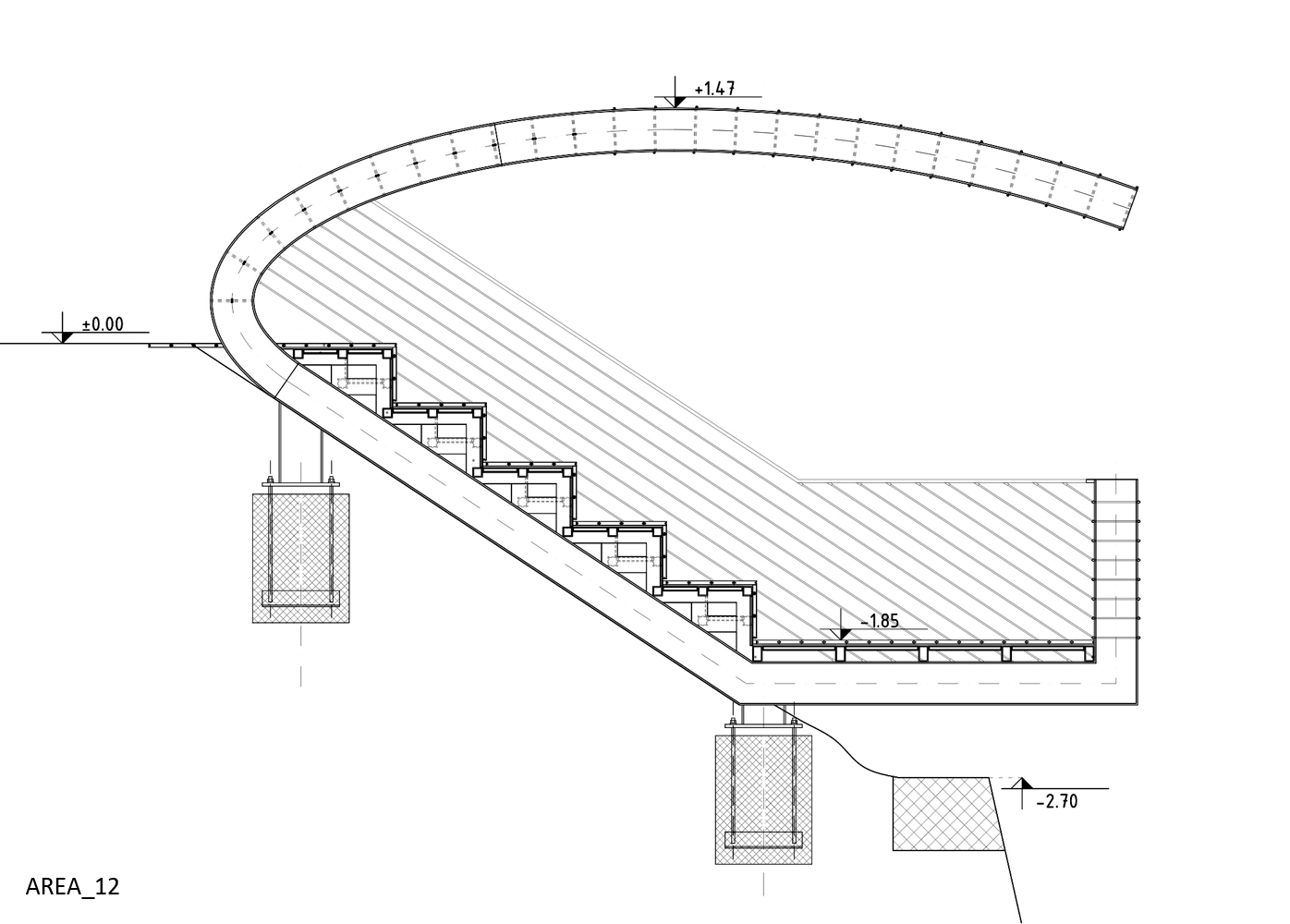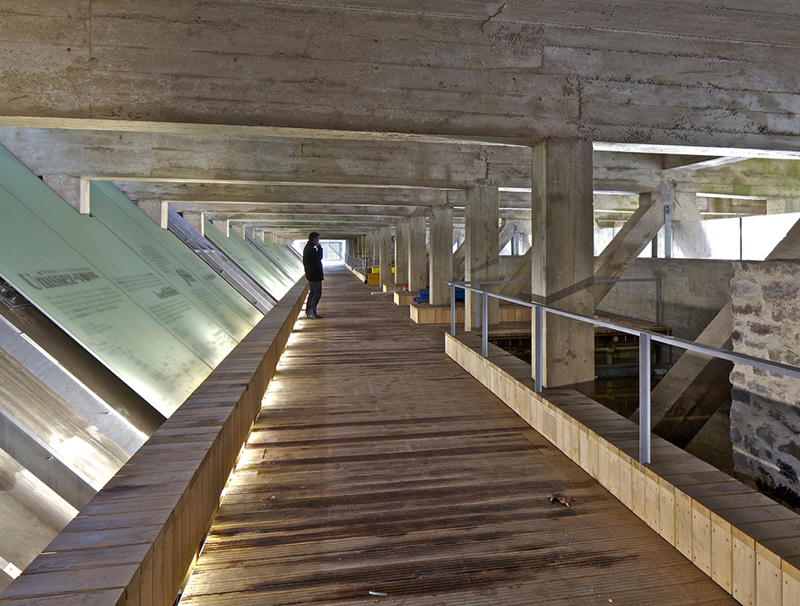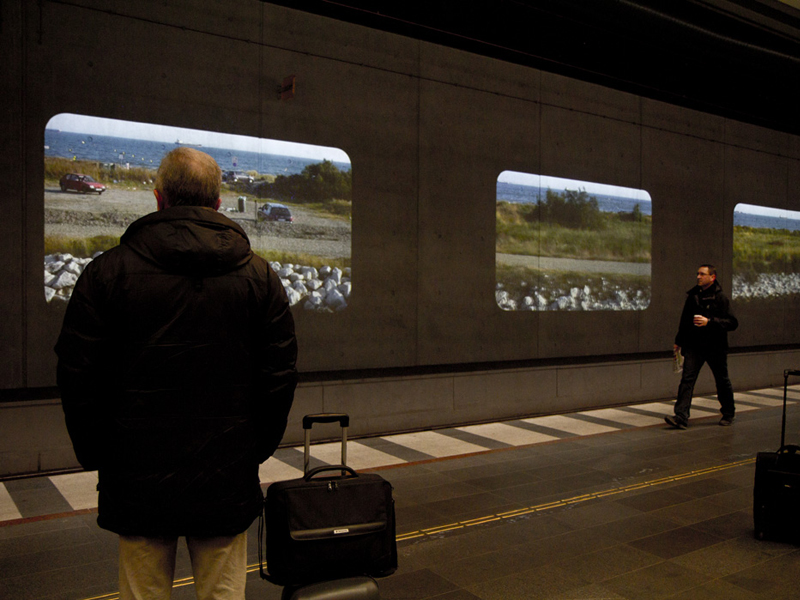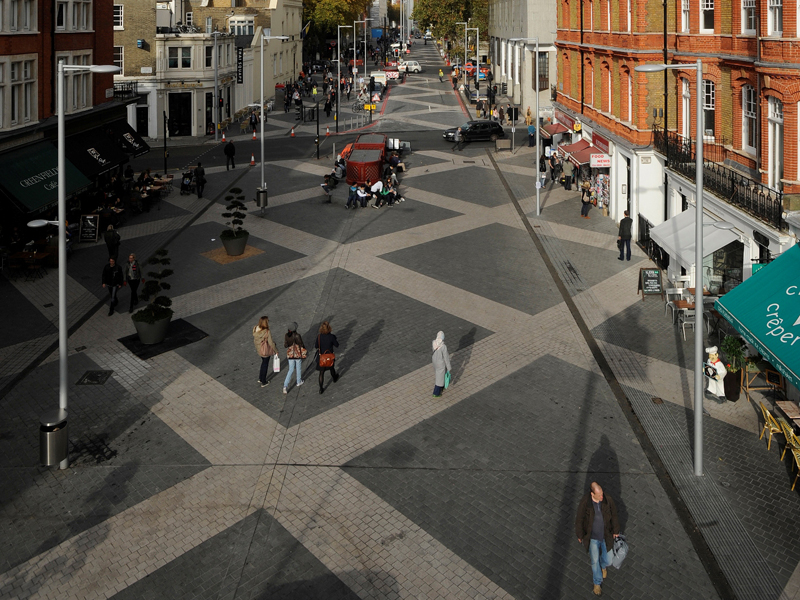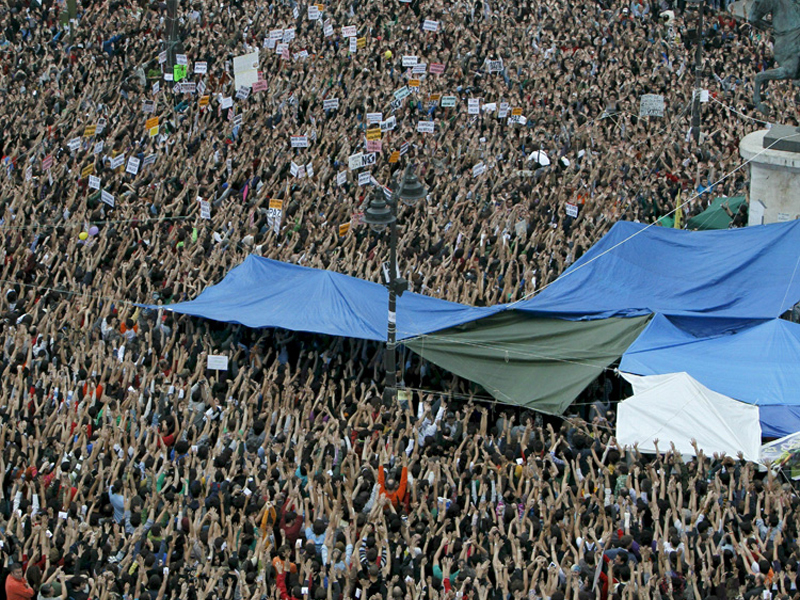Estado anterior
Tras penetrar en la capital eslovena por el sur, el río Ljubljanica describe un pronunciado meandro que bordea la falda septentrional del cerro del Castillo y abandona el casco urbano hacia levante. En el siglo XVIII, para acabar con los frecuentes desbordamientos del cauce, se abrió el canal de Gruber (Grubarjev prekop), que ataja por el lado meridional del promontorio, confinando en una isla el casco antiguo. Excepcionalmente bien conservado, este aislado casco histórico acumula un generoso repertorio de estilos arquitectónicos que, desde el Barroco hasta la Secesión de Viena, reflejan la posición de Liubliana como encrucijada cultural y geográfica entre el sur latino y el norte germánico. Una vez amansado el río, la ciudad pudo expandirse hacia el norte gracias a la construcción de un buen número de puentes.Algunos de los más remarcables, como el puente Triple (Tromostovje, 1932) o el puente de los Zapateros (Čevljarski most, 1931), son obra del arquitecto Jože Plečnik, que, a partir de los años treinta del siglo XX, acompasó el curso fluvial con una profusa y variada colección de edificios, plazas, canales, diques y parques de ribera. Reconociendo el papel vertebrador del río y dotándolo de una monumentalidad culta y amable, Plečnik quiso convertir Liubliana en la nueva Atenas, una ciudad ilustrada y modélica. Con esta voluntad, recogió el arquetipo de la estoa para ordenar un tramo de la orilla derecha con el porche del mercado de Tržnica y el modelo del ágora para reconstruir, en la orilla izquierda, la plaza del Congreso (Kongresni trg).
Sin embargo, a principios del presente siglo, el río se había distanciado del espíritu que Plečnik había logrado darle, hasta el punto de perder su protagonismo como espacio público principal. Faltos de infraestructuras actualizadas, la mayoría de los espacios ribereños habían caído en manos del tráfico rodado o el aparcamiento indiscriminado y pocos de ellos eran exclusivos para los peatones. Aquello debilitó drásticamente los atractivos del centro urbano, asolado por el declive económico del comercio y el abandono de una población que prefería irse a vivir a las afueras. Todo ello amenazaba a Liubliana con las nefastas consecuencias de la dispersión urbana.
Objeto de la intervención
A partir del año 2004, el Ayuntamiento de Liubliana, en colaboración con varias empresas municipales, destinó una ambiciosa inversión pública de más de veinte millones de euros al enderezamiento de esta situación. Durante un periodo de tiempo admirablemente corto, coordinó a varios equipos de profesionales locales en el desarrollo de una serie de intervenciones puntuales, realistas y viables, pero articuladas dentro de un sistema urbano de gran alcance.El río Ljubljanica, como hilo conductor de ese sistema, debía retomar el papel que le había otorgado Plečnik. En torno a sus aguas, la mejora de la calidad de vida al aire libre fomentaría la sociabilidad y estimularía la regeneración económica de la ciudad antigua. Se trataba, en definitiva, de incrementar la fuerza de atracción del centro para contrarrestar la negativa tendencia a la dispersión urbana.
Descripción
Desplegada a lo largo de más de dos kilómetros de río, la intervención arranca, aguas arriba, en el punto en el que se separan el curso original del Ljubljanica y el canal de Gruber. Ahí, una nueva pasarela peatonal (2010) conecta el Jardín Botánico de la Universidad de Liubliana, la más antigua institución científica y educativa de Eslovenia, con el nuevo parque Municipal de Špica (2010), un espacio verde ribereño que remata el vértice meridional de la isla en la que se halla el casco urbano. Los primeros trescientos metros de la orilla izquierda del canal han sido objeto de una restauración paisajística que potencia al mismo tiempo su carácter natural y su accesibilidad.Se ha restaurado, asimismo, el dique Trnovo (2010), en la orilla izquierda del tramo del río, que, siguiendo setecientos metros aguas abajo, llega hasta la confluencia con el Gradaščica, un afluente del Ljubljanica. El encuentro de este curso menor con la avenida Barjanka, arteria principal de acceso a la ciudad, se ha resuelto con un nuevo puente (2008), homónimo de la vía, y un parque fluvial (2008), homónimo del puente. El nuevo viaducto es vecino del puente de Trnovo, obra de Plečnik y centro del distrito que lleva el mismo nombre.
Aguas abajo del Ljubljanica, poco después de la desembocadura del Gradaščica, las orillas van adquiriendo un cariz más urbano. Ahí se ha restaurado el antiguo puente de Hradecki (2011), así como los diques Krakovo (2010) y Breg (2010), ambos en la orilla izquierda. El dique Breg ofrece unas gradas en la plaza Nueva (Novi trg), que también debe ser renovada. Se trata de una de las plazas más antiguas de la ciudad, adyacente a la Biblioteca nacional y universitaria, que también es obra de Plečnik.
Unos ciento cincuenta metros en el sentido de la corriente, aún en la orilla izquierda, se halla el dique Hribarjevo, con la plaza Dvorni, ambos restaurados poco antes de esta intervención. En la orilla opuesta, perpendicularmente al dique Cankarjevo, está la calle Ključavničarska (2009), que conduce al cerro del Castillo y que también ha sido objeto de restauración. A partir del puente Triple, en la orilla izquierda, se ha dotado el dique Petkovškovo de un pabellón (2006) que se asoma sobre el río con unas gradas en voladizo para ofrecer una de las mejores vistas hacia el cerro del Castillo. El nuevo puente del Carnicero (2010), exclusivamente peatonal, une el centro del dique de Petkovškovo con la estoa que Plečnik levantó como fachada fluvial del mercado de Tržnica. Cerca de cuatrocientos metros aguas abajo, la intervención finaliza con la inserción de un nuevo puente del Grano (2010), provisto de una gradería en voladizo, conectada a un embarcadero que flota a ras del agua.
Valoración
La renovación de las orillas del río Ljubljanica a su paso por el casco histórico de la capital eslovena es fruto de un esfuerzo colectivo que, concentrando los recursos en operaciones puntuales y optimizando la coordinación entre varios promotores y autores, recoge el sueño humanista de Plečnik y le da continuidad. Las orillas ahora son plenamente accesibles, tanto en el sentido longitudinal de sus diques como en la relación transversal que establecen con los tejidos adyacentes. Convertido en un espacio público unitario y al mismo tiempo repleto de lugares especiales, el río transmite al casco histórico la suficiente atracción gravitatoria para contrarrestar las fuerzas centrífugas de la dispersión urbana.David Bravo
Traducción de Maria Llopis
[Última actualización: 25/04/2021]


